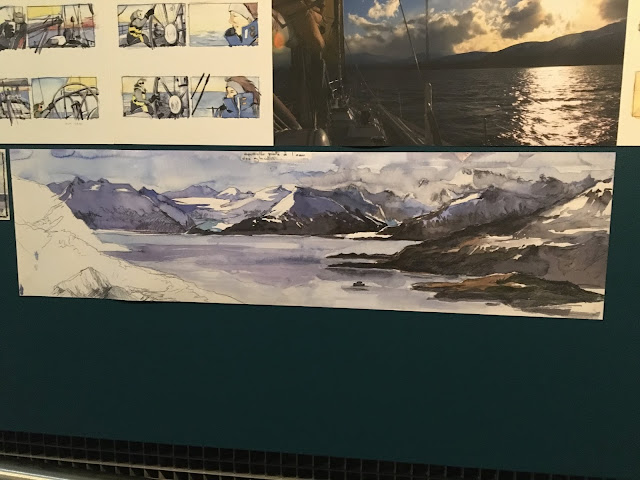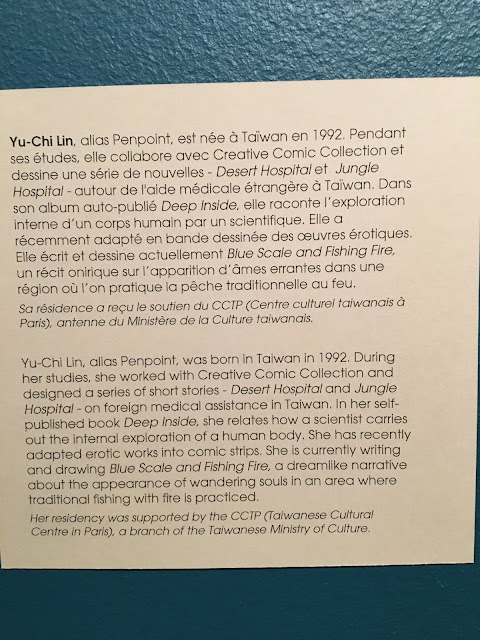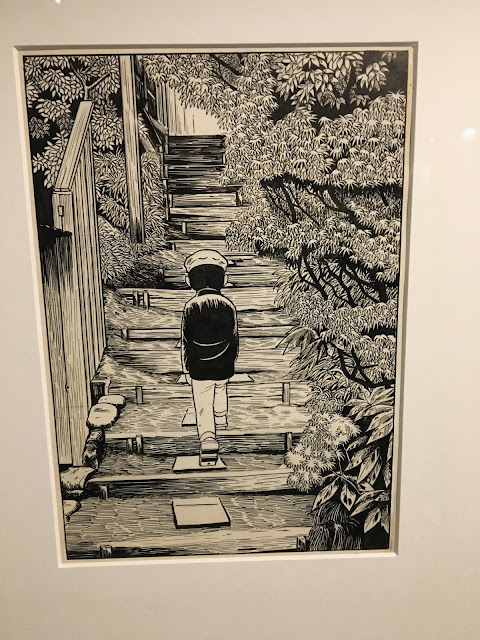In Visible Cities, Global
Comics: Urban Images and Spatial Form Benjamin Fraser takes an “urban
cultural studies approach to the medium of comics” (2019: 3). Braiding comics
theory alongside Marxist spatial thinkers such as Raymond Williams and Henri Lefebvre,
Fraser argues that “comics artists necessarily comment on the way social power
drives the structure of the city, resulting in the exclusion of certain groups
and certain ideas” (2019: 6-7). While Visible
Cities, Global Comics follows an increasing interest in the urban and
spatial aspects of comics, as seen in edited collections such as Jörn Ahrens
and Arno Meteling’s Comics and the City (2010) and Jason Dittmer’s Comic
Book Geographies (2014), it has the distinction of being the first
scholarly monograph on global urban representations in comics. The book theorizes
how cities are represented in comics and how urban geography is implicated in
the very structure of comics as an industrialized art form (Fraser, 2019: 217).
Fraser sees three important
points of connection between cities and comics: subject matter, artistic form,
and method of production. Explaining the importance of what he calls “an urban
contribution to an interdisciplinary phase in comics studies,” he says:
First,
the city becomes a privileged subject of comics. Second, the panel-and-gutter
structure of comic strips, in particular, reflects the way in which art was
impacted by tropes of linearity and rational planning that were themselves
synonymous with the urban form. Third, the mass production of comics showcases
its links with forms of industrialization that are urban in origin. (Fraser, 2019:
3, 7).
Fraser’s three-pronged
analysis is perhaps one of the book’s greatest contributions. He does not
merely analyze the visual representation of cities in comics, how “the city
becomes an iconic expression of modernity in comics” (Fraser, 2019:7). Fraser’s
analysis is both deeply formalist, attending to the geometrizing devices of the
comics page, and deeply materialist, tracing the historical contexts and
political economies under which comics creation, production, and distribution
become intertwined with urban logics. The book’s second significant
contribution is its global and temporal scope. The book comprises comics from
across the globe from the 18th century through the contemporary
moment, and Fraser carefully situates each comic within its unique geographic
and sociohistorical location. While Fraser himself notes that the book
emphasizes works that have already been translated to English, with the
exception of a few Spanish-language comics, its attention to global comics slightly
pushes the needle away from comics studies’ Anglophone emphasis and showcases
the importance of highlighting newly translated and non-English works.
Tracing the intersections of
content, form, and production, Fraser begins each chapter by offering a
theoretical framework for reading comics through a particular node of urban
cultural studies. He then provides a series of examples, examining each comics
artist somewhat chronologically and offering biographical and historical
context as necessary before moving into an analysis of their work. The first
chapter focuses predominantly on early comics, beginning with Hogarth and then
moving into the rise of comics alongside 20th Century print
journalism, that are “decidedly urban in orientation,” comics that represent
city spaces thematically and formally and engage urban readers (Fraser, 2019:
19). Where chapter one evaluates the representation of the city in comics, chapter
two interrogates the affective, interior effects the city has on the lives of
urbanites. It takes a Marxian approach to urban everyday life and evaluates how
comics artists employ human senses to resist the “dehumanizing forces that
pervade the modern city” (Fraser, 2019: 51). Chapter three critiques how urban
planning is used to solidify power and privilege and explores how comics
represent the material structures of the city as oppressive and limiting. Chapter
tour interrogates the relationship between architecture and comics and
evaluates how both construct the tactile, spatial experience of the city. The
fifth and final chapter highlights how discourses about danger, disease, and
death that inform our understanding of the city are fantastically depicted in
comics. Together, these chapters investigate how the structure of the city
reinforces patriarchal and normative social and state powers, the material
impacts urban space has on the lives of urbanites, and how these dynamics get
represented, questioned, and critiqued in comic narratives (Fraser, 2019: 217).
Throughout the book, Fraser
maintains a commitment to emphasizing the material conditions of the city and
comics production. For instance, the second chapter traces how the linear
structure of modern urban planning coincides with the rise of mechanized
industrialization—in short, how “capitalism survived throughout the 20th
Century by producing space in its image” (Fraser, 2019: 52, 54). In this
chapter, Fraser argues that Daishu Ma’s Leaf (2015) uses color and
visual splendor to illustrate the Marxian premise that the human senses, such
as pleasure and curiosity, can resist capitalism’s alienation (Fraser, 2019:
89). Perhaps the book’s most salient example of how comics intertwine with the
material conditions of the industrialized city is Fraser’s analysis of Joost
Swarte’s The Comix Factory (1980) in the fourth chapter. Swarte’s single panel image, which was
designed especially for the cover of RAW #2, illustrates how comics
production is intimately connected to the structure of the city through its
visual density, verticality, and graphic excess (Fraser, 2019: 141-143). Visible Cities, Global Comics bursts with examples of how comics are
imbricated in the development of the city and its investments in
industrialization and global capitalism, yet Fraser avoids straying into
abstract musings about the formal “architecture” of comics that are devoid from
a materialist base. As he makes clear, “It is important to understand
that artistic representation is always tied to the material world in which we
live” (Fraser, 2019: 12). Fraser’s Visible
Cities, Global Comics: Urban Images and Spatial Form is expansive in scope and offers a significant contribution to both
urban cultural studies and comics studies. Ultimately, the work encourages comics
scholars to move beyond mere visual representation in their analysis and to consider
the material conditions under which comics are produced and how processes of
alienation, industrialization, and power manifest themselves in the formal
structures of cities and comics.
Maite Urcaregui
A version of this review will appear
in the 21:2 issue in the fall of 2020.
Maite Urcaregui is a doctoral candidate
in the Department of English at the University of California, Santa Barbara.
Maite’s research investigates how multiethnic American authors participate in and
problematize convenient discourses of citizenship, nation, and identity in
their literature through strategic deployments of visual elements. Her work is
forthcoming in The Routledge Companion to Gender
and Sexuality in Comic Book Studies >Gender and the
Superhero Narrative (University Press of Mississippi, 2018).




























































































































